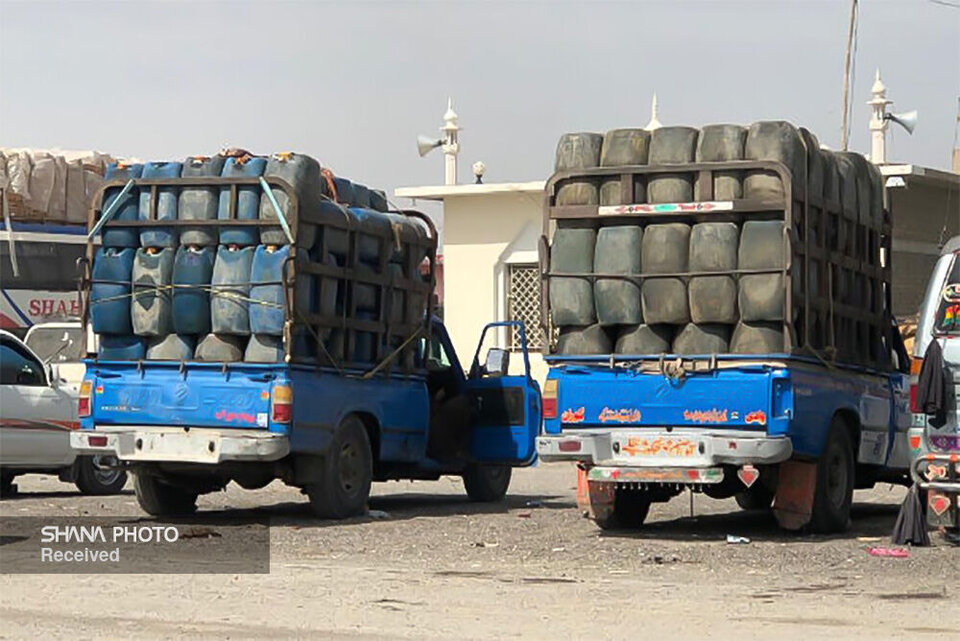These measures aim to intelligently combat organized fuel smuggling, enhance transparency, reform subsidies, and optimize energy consumption, opening new horizons for the country's fuel distribution system.
Fuel smuggling has long been a major challenge, draining national financial resources and negatively impacting energy supply and distribution management. The price disparity of fuel in the region, coupled with weak oversight of distribution and consumption, has turned smuggling into a persistent crisis that requires structural reforms, advanced monitoring technologies, and extensive executive measures. In response, the 14th administration has adopted a multi-layered, intelligent approach to tackle this issue.
Fuel smuggling: A national disaster
Official statistics indicate that between 20 to 30 million liters of fuel—primarily diesel and gasoline—are smuggled out of Iran’s borders daily. This alarming figure highlights one of the country’s biggest economic and managerial challenges in the energy sector. Such large-scale smuggling wastes trillions of tomans in government subsidies annually—funds that should instead support infrastructure development, public services, and vulnerable populations.
Moreover, this trend not only exposes inefficiencies in subsidy distribution and weak oversight but also creates lucrative opportunities for informal, often organized smuggling networks. These networks exploit the vast price difference between domestic and neighboring markets, becoming key players in Iran’s shadow economy.
President Masoud Pezeshkian has called the daily smuggling of 20-30 million liters of fuel a "national disaster," emphasizing that it reflects serious flaws in the distribution and monitoring systems. He stated that his administration is determined to halt this waste of resources through scientific and advanced regulatory methods, adding that as an Iranian citizen, he finds it unacceptable for such massive smuggling to occur within a system supposedly under full state control.
Mohammad-Sadeq Azimifar, CEO of the National Iranian Oil Refining and Distribution Company (NIORDC), has stressed a preventive approach to fuel smuggling, asserting that with reliable data, serious measures can be taken to combat it. He acknowledged that smuggling has plagued the country for years but noted that it is now being openly addressed, eliminating the need for denial. While complete eradication may be impossible, efforts are underway to minimize it.
Systems await cooperation from other institutions
A significant portion of smuggling occurs in the consumption sector, largely due to insufficient oversight of fuel quotas. Investigations also reveal that most smuggling happens in transportation. To address this, the Oil Ministry has introduced several monitoring initiatives, including the Sepahtan and Sipad (fuel allocation based on mileage) systems.
These systems, designed to reduce human intervention and allocate fuel based on actual vehicle performance, were officially approved in 2016. However, their implementation has been delayed by nearly a decade. Under these systems, fleet operations are digitally tracked, eliminating manual documentation and significantly reducing diesel consumption and smuggling. Yet, despite nine years since their approval, fuel allocation is still based on traditional transport documents, with no operational data from Sepahtan or Sipad available.
While the Oil Ministry says all necessary infrastructure is ready, challenges in other agencies—such as the Ministry of Roads and Urban Development and municipalities—have stalled full implementation.
Real-time monitoring: A blow to profiteers
The NIORDC, in collaboration with other entities, has launched a real-time supply chain monitoring system—a strategic move toward digital transformation and transparency. Utilizing AI and advanced technologies, this system aims to combat traditional challenges like smuggling, product leakage, and weak field controls while establishing a smart, transparent, and domestic energy management infrastructure.
This project, a key initiative of the 14th administration, is structured in three phases, with major pipeline, port, and border storage facilities expected to be equipped by March 2026. Full nationwide coverage is projected within 36 months, ensuring every drop of fuel is tracked from production to consumption.
Three-tier fuel pricing: A major barrier against smuggling
The three-tier diesel pricing system is the latest measure to curb smuggling, targeting optimal fuel management, reducing black-market supply, and optimizing energy subsidies. This policy aims to reduce the price gap between domestic and neighboring markets, weakening smuggling incentives.
Under this system:
- Subsidized rate (300 tomans per liter) remains unchanged for active fleets.
- Semi-subsidized rate applies to excess consumption (up to 40% above quota).
- Market rate (based on refinery prices) applies to non-essential use.
Officials emphasize that the goal is not to raise prices for legal fleets but to manage consumption and deter smuggling by narrowing price disparities.
In-route fueling: A novel anti-smuggling strategy
A new in-route fueling system, developed in collaboration with the Road Maintenance and Transportation Organization and municipalities, allocates fuel to diesel fleets based on actual mileage and verified routes. Trucks receive fuel at designated stations only after movement is confirmed via monitoring systems, preventing fake waybills and misuse.
Fuel smuggling is no longer just a minor violation but a complex, organized network requiring more than sporadic crackdowns. Transparent distribution processes, revised pricing policies, and advanced technology offer sustainable solutions. If effectively implemented, these measures can steer Iran’s fuel distribution system toward greater efficiency, fairness, and sustainability.
The oil industry, through real-time monitoring, in-route fueling, and three-tier pricing, has launched a determined campaign against smugglers. With strengthened oversight, cutting-edge technology, and inter-agency coordination, Iran can dismantle smuggling networks and safeguard its national resources. Continued executive commitment and rigorous monitoring will be crucial in ensuring long-term success.
By Negin Salimian
Staff writer


Your Comment